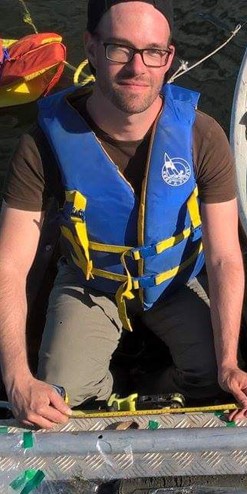Mike Zwick
Born in northern Germany, I studied Geosciences and specialised in palaeoclimate reconstructions. At this juncture I am particularly interested in the development and application of micropalaeontological, geochemical and geophysical methods to infer parameters relevant to the understanding of past climate systems.
In my bachelor's thesis, I conducted morphological and statistical analyses of planktic foraminifera tests from the Holocene (NE of Brazil) and created a model that predicts the size normalized weight of Orbulina universa based on shell thickness and porosity.
For my master's thesis, I participated in a 9-week expedition (PS87 - 'Alpha Ridge-Lomonosov Ridge Expedition') to the Central Arctic Ocean. I used the collected material to reconstruct ice concentrations and water mass characteristics (salinity, productivity and temperature) above the western Lomonosov Ridge for the last 130 ka. For this intent I analysed Ostracod thanatocoenoses, applied biostatistical methods and performed geochemical measurements (δ18O/δ13C) on selected species/morphotypes of Ostracods and benthic/planktic foraminifers.
In October 2016, I joined BECS as a PhD student for the ALKENoNE project. Within this project, I am especially interested in proxy development and application. Here, I focus on biomarkers (alkenones, long-chain diols, compound-specific isotopes), ostracods shell geochemistry, (μ-)XRF and grain size analysis for quantitative palaeo-environmental reconstructions in the Canadian Prairies. For those analyses, I use sophisticated instruments (GC-FID, GC-MS, GC-IRMS, ICP-MS, EPMA, MALDI-FTICR-MS, (μ-) XRF and Laser Diffraction Spectroscopy). For a deeper exploration of those datasets, I use R to apply various statistical techniques.


